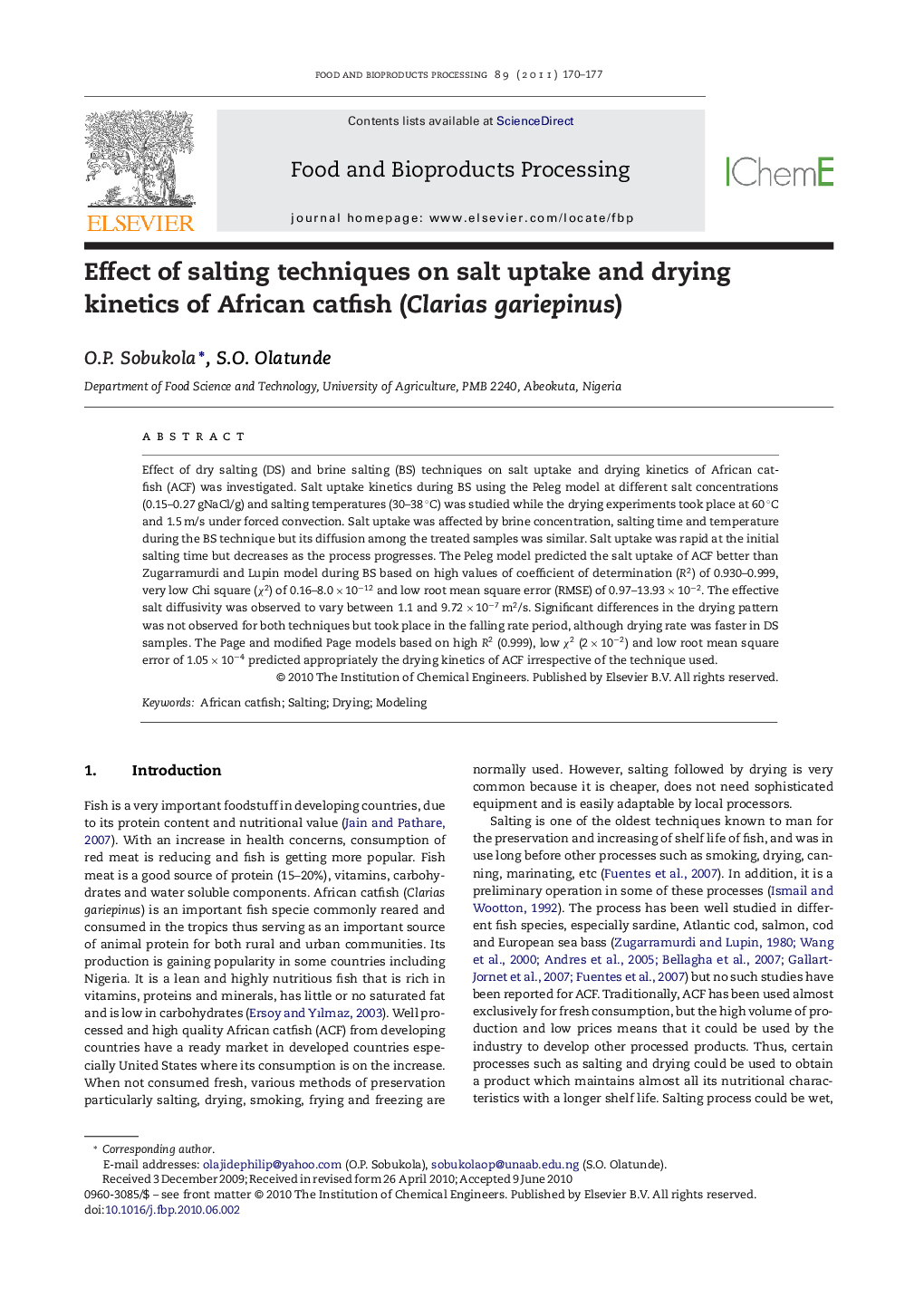| Article ID | Journal | Published Year | Pages | File Type |
|---|---|---|---|---|
| 19214 | Food and Bioproducts Processing | 2011 | 8 Pages |
Effect of dry salting (DS) and brine salting (BS) techniques on salt uptake and drying kinetics of African catfish (ACF) was investigated. Salt uptake kinetics during BS using the Peleg model at different salt concentrations (0.15–0.27 gNaCl/g) and salting temperatures (30–38 °C) was studied while the drying experiments took place at 60 °C and 1.5 m/s under forced convection. Salt uptake was affected by brine concentration, salting time and temperature during the BS technique but its diffusion among the treated samples was similar. Salt uptake was rapid at the initial salting time but decreases as the process progresses. The Peleg model predicted the salt uptake of ACF better than Zugarramurdi and Lupin model during BS based on high values of coefficient of determination (R2) of 0.930–0.999, very low Chi square (χ2) of 0.16–8.0 × 10−12 and low root mean square error (RMSE) of 0.97–13.93 × 10−2. The effective salt diffusivity was observed to vary between 1.1 and 9.72 × 10−7 m2/s. Significant differences in the drying pattern was not observed for both techniques but took place in the falling rate period, although drying rate was faster in DS samples. The Page and modified Page models based on high R2 (0.999), low χ2 (2 × 10−2) and low root mean square error of 1.05 × 10−4 predicted appropriately the drying kinetics of ACF irrespective of the technique used.
